Types and lighting systems
Lighting systems
Artificial lighting systems are determined by the way the lighting fixtures are placed. According to the methods of placing the lighting fixtures in the premises, general and combined lighting systems are distinguished.
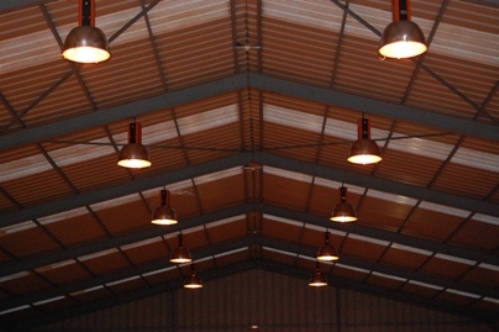
General lighting system
The general lighting system is designed to illuminate the entire room and work surfaces. General lighting can be uniform and localized. General lighting fixtures are located in the upper part of the room and are attached to the foundations of buildings directly to the ceiling, in trusses, on walls, columns or on technological production equipment, on cables, etc.
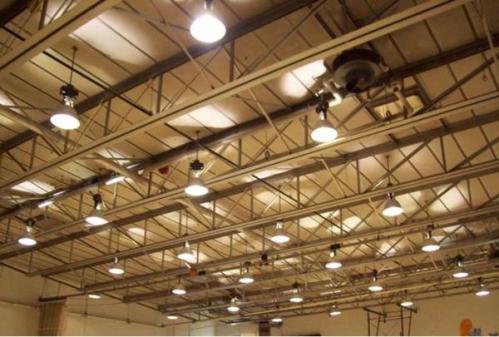
Uniform lighting
With general uniform lighting, uniform lighting is created over the entire area of the room. Lighting with uniform placement of lighting fixtures is used in industrial premises where the technological equipment is located evenly over the entire area with the same visual conditions, or in public or administrative premises.
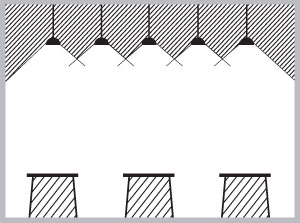
Localized lighting
General localized lighting is provided in rooms where work is carried out in different areas that require different lighting, or when workplaces in the room are concentrated in groups and it is necessary to create certain directions of light flow.
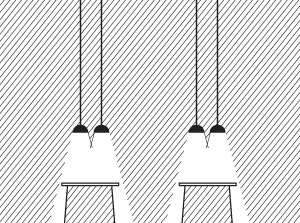
The advantages of localized lighting over general uniform lighting are in the reduction of the power of lighting installations, the ability to create the necessary direction of the light flow, to avoid the shadows of the production equipment and the workers themselves at the workplaces.
Local lighting
In addition to the general lighting system, local lighting can be used in the premises. Local lighting is provided at workplaces (machines, layouts, tables, marking tiles, etc.) and is designed to increase the illumination of workplaces.
The device in the premises with only local lighting is prohibited by the rules. Local repair lighting is carried out with portable lighting fixtures that are connected through a step-down transformer at a safe voltage of 12, 24, 42 V, depending on the category of the room in terms of the safety of the service personnel.
Combined lighting
Local and general lighting used together form a combined lighting system. It is used in rooms with precise visual work requiring high lighting. With such a system, local lighting fixtures provide lighting only for workplaces, and general lighting fixtures for the entire room, workplaces and mainly paths, alleys.
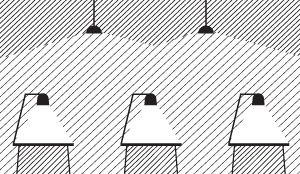
The combined lighting system reduces the installed power of the light sources and energy consumption, since the lamps for local lighting are switched on only during work directly at the workplace.
Choosing a lighting system
The choice of one or another lighting system is mainly determined by the location of the equipment and, accordingly, by the location of the workplaces, the technology of the work performed and economic considerations.
One of the main indicators characterizing the possibility of using a common or combined lighting system is the density of the location of workplaces in the room (m2 / person).
Table 1 shows the recommended lighting systems for different categories of visual work, depending on the density of the location of the workplaces, while giving possible energy savings.
table 1… Recommended areas of application for general and combined lighting systems

Note: + — recommended; - - It is not recommended; S — average density, m2 per worker.
Types of lighting
Artificial lighting is subdivided into working, emergency, security and duty lighting. Emergency lighting can be security and evacuation lighting.
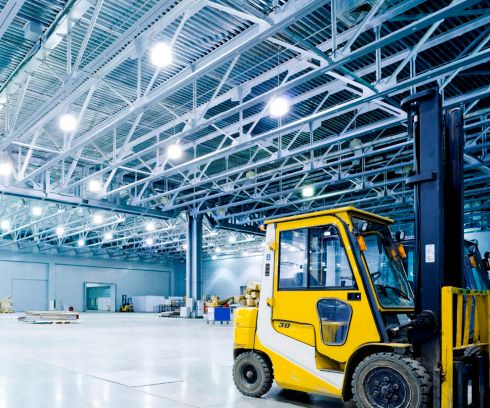
Working lighting
A worker is called lighting, which provides standardized lighting conditions (illumination, quality of lighting) in rooms and in places where work is done outside buildings.
Working lighting is carried out for all premises of buildings, as well as for areas of open spaces intended for work, passage of people and movement.For rooms with zones with different natural lighting conditions and different modes of operation, separate lighting control of such zones should be provided.
Standardized characteristics of lighting in rooms, outside buildings can be provided both by working lighting lamps and by the joint action of safety lighting and (or) evacuation lighting with them. If necessary, some of the luminaires for work or emergency lighting can be used for emergency lighting.
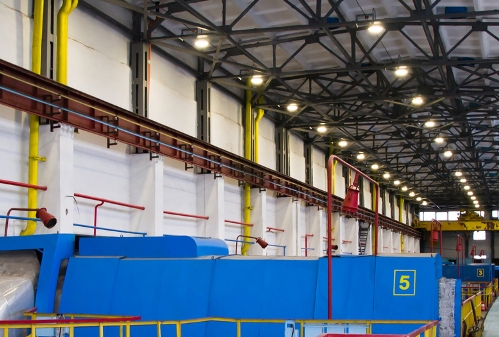
Emergency safety lighting
Emergency lighting refers to lighting that will continue to operate in the event of an emergency shutdown of the work light. This type of lighting is provided in cases where the shutdown of work lighting and the associated interruption of maintenance of equipment and machinery may cause:
-
explosion, fire, poisoning of people;
-
long-term disruption of the technological process;
-
disruption of the work of critical facilities, such as power plants, radio and television transmission and communication centers, control rooms, pumping installations for water supply, sewage and heating, in which it is unacceptable to stop work, etc.
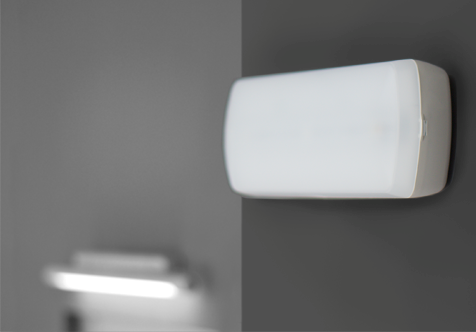
Safety lighting must create on working surfaces in industrial premises and on the territories of enterprises that require maintenance, when the working lighting is turned off, the lowest illumination of 5% of the standard lighting for working lighting from general lighting, but not more - less than 2 lux inside buildings and not less than 1 lux — for the territories of enterprises.At the same time, the creation of the lowest illuminance in buildings with more than 30 lux with discharge lamps and more than 10 lux with incandescent lamps is allowed only if there are appropriate justifications.
Emergency evacuation lighting
Evacuation lighting is called lighting for the evacuation of people from premises in the event of an emergency shutdown of the working lighting.
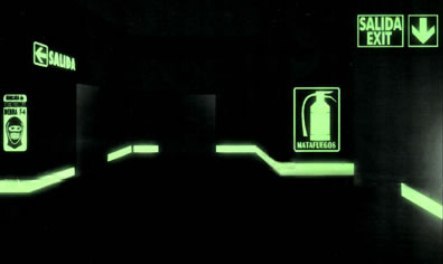
Evacuation lighting is provided in premises or in places where work is carried out outside buildings, mainly in the following cases:
-
in places dangerous for people to pass through;
-
in passages and on staircases used for the evacuation of people, when the number of evacuees exceeds 50 people;
-
along the main paths of industrial premises in which more than 50 people work;
-
in the premises of public buildings, administrative and service buildings of industrial enterprises, if more than 100 people can be in the premises at the same time;
-
in industrial premises without natural light, etc.
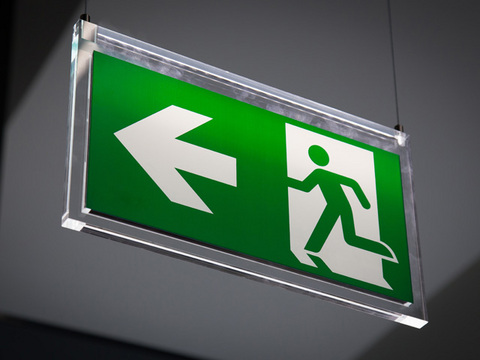
Evacuation lighting should provide the lowest illuminance on the floor of the main walkways (or on the ground) in the premises of 0.5 lux, in open areas 0.2 lux.
The lighting devices for evacuation lighting and protective lighting are intended to light up, turn on at the same time as the lighting devices of the working lighting and not light up, automatically turn on when the power supply to the working lighting is interrupted.
Security lighting
Security lighting, in the absence of special technical means of protection, must be provided at the borders of territories protected at night. And it should create an illumination of at least 0.5 lux at ground level.
When special technical means of protection are used, the lighting is taken over according to the safety lighting design assignment.
Emergency lighting
Duty lighting is called non-duty lighting. The range, illuminance values, uniformity and quality requirements of emergency lighting are not standardized.
